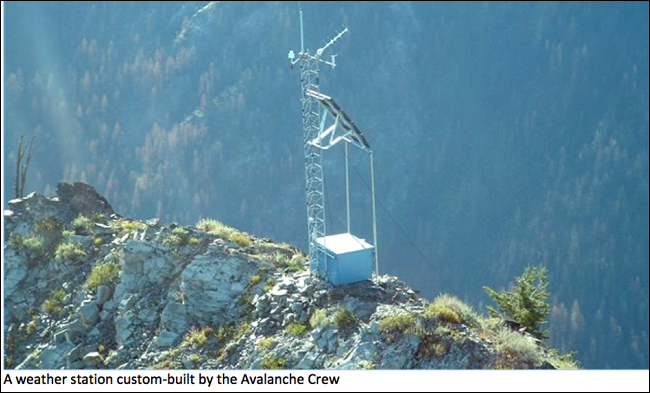

Upgrades to avalanche weather stations
provides more reliable forecasting
![]()
Life in the rugged mountains of Central Idaho requires self-reliance, grit, and a healthy dose of ingenuity to solve tough problems. Thankfully, the Avalanche Crew in Lowman have those traits in spades – and they put them to work with a recent project to improve the way they do their job.
The crew’s mission is to keep Idaho Highway 21 and US-12 open to the public as long as it is safe. In the winter, these routes are plagued by regular avalanches. Historically, ITD simply closed the highway for the entire winter.
Today, the Avalanche Crew uses a series of monitoring stations, employed by other state DOTs but new to Idaho, to understand the conditions of the snowpack and de termine when the threat of an avalanche is high, requiring a road closure.
termine when the threat of an avalanche is high, requiring a road closure.
The need for information gathered at these stations is paramount for the crew to do its job. The tool to gather that information was a weather station used throughout Idaho. However, those stations were no match for the harsh winter weather of the Boise Mountains.
“We didn’t have reliability before,” said crew chief Bill Nicholson. “These stations are in tough conditions and if something broke it would be weeks before we had data.”
Nicholson knew he needed weather monitoring that could take a beating and be fixed by his crew. The answer followed in the tradition of the Idaho frontier: make it yourself.
Nicholson and his team created bespoke weather stations that were simple, included all the measuring equipment they needed, with parts that could be easily repaired or replaced by a crew member traversing the mountains on skis.

Working with ITD’s technology services, the stations transmit data securely to a cloud service and translate into data Nicholson’s team uses to make better decisions.
“We can now graphically display a storm,” said Nicholson. “Being able to look at so many numbers when we’re in a high-pressure situation, it helps us make a better decision.”

The new stations provide improved, consistent data and are significantly cheaper to build and maintain.
Nicholson conservatively estimated each station is $40,000 cheaper than the previous version. By doing the maintenance in-house, he calculates an annual savings of $10,000 to keep the stations serviced.
Pictured right: Avalanche Crew member Chantel Astorga takes measurements at the Banner Creek Summit weather station.
Published 08-17-18